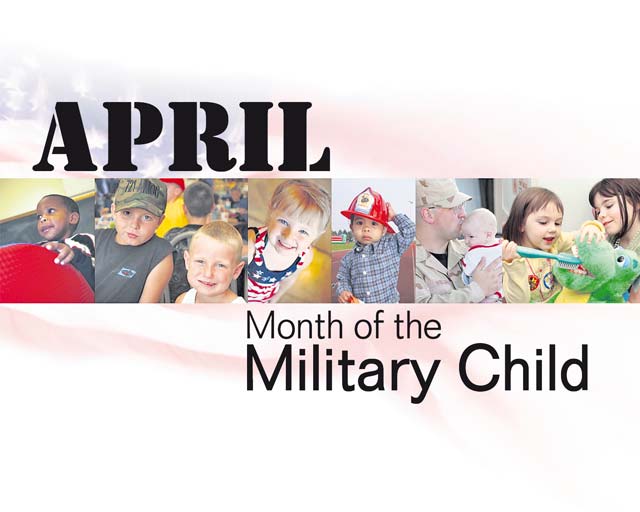 WASHINGTON (AFNS) — To highlight the year-round contributions, courage and patriotism of the military community’s youngest members, the Defense Department observes April as the Month of the Military Child, said a Pentagon official.
WASHINGTON (AFNS) — To highlight the year-round contributions, courage and patriotism of the military community’s youngest members, the Defense Department observes April as the Month of the Military Child, said a Pentagon official.
Established by then Defense Secretary Caspar Weinberger in 1986, the month recognizes about 1.9 million U.S. military children ranging from infants to 18 years old, who have one or both parents serving in the armed forces, said Barbara Thompson, the director of DOD’s Office of Family Readiness Policy.
“We want to highlight their sacrifices (and) support of the military member in their families, so it behooves us to take time from the busy calendar of our events and recognize military children,” she said.
Permanent change of stations, deployments and training activities, among other facets of military life, can present unique challenges to children who must constantly adjust to distance, unfamiliarity and uncertain schedules, Thompson said.
“That can be a real sacrifice, because each parent is a very important part of that child’s makeup,” she said. “So we want to make sure that when they move or change schools, all of those transition times are supported with resources, programs and services.”
DOD offers a variety of programs to help military children overcome these challenges, Thompson said.
Available programs offer assistance
For example, the Child Development Program offers childcare up to age 12. Similarly, youth development programs offer older children opportunities for recreation, and character, social and emotional development.
Thompson reported that parents, too, have resources to help guide and nurture their children of all ages.
The New Parents Support Program helps parents during pregnancy and childbirth, and children up to three years old, to reach their full potential through home visitations and parent support groups, she said.
Military OneSource is another resource available 24/7, 365 days a year, to support parents to learn more about parenting skills, as well as to find support for themselves, Thompson said. It also offers telephonic, face-to-face, online and video nonmedical and financial counseling, which she described as “strengthening pillars” for military households separated from extended family or settling into a new environment.
“On the installations, we have military family support centers,” she said, “where a multitude of services for transitions and life skills are offered to make sure our families can be resilient and strengthen them in their efforts to be the parents they want to be.”
Family support has evolved over the last 40 years to become the family readiness system, which is a collaborative network of agencies, programs, services and professionals who promote the readiness and quality of life of military families both on installations and in the community, Thompson said.
“There is no ‘wrong’ door,” she said. “So regardless of where you’re seeking support, whether it’s with your pediatrician or with your chaplain, he or she will also know the resources to support you in your efforts to navigate the military life course.”
A visual tribute
Across the services, Thompson said, parades, fairs, art and poetry contests will abound as installations develop engaging and amusing activities to solidify the bonds among families and communities.
“We want to make sure that children’s voices are heard during the Month of the Military Child,” she said. “It’s a fun time to be with their families (and) to take part in the various activities that the services developed to recognize military children.”
Community outreach initiatives include partnerships with the Department of Agriculture and the National Institute of Food and Agriculture’s 4-H youth group to promote “Purple Up!” on April 15, Thompson said. Students, school sports team members, teachers and community leaders will wear purple as a visual tribute to military children.
“It is hard to be a military child, and they’re doing it super well,” Thompson said.


